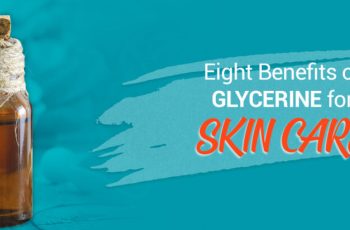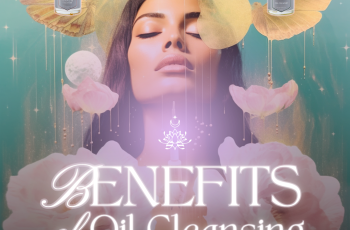
Can You Use Retinol on Droopy Eyelids?
Retinol, one of the most potent anti-ageing ingredients available on the market. Whether you use products that can be brought over the counter, prescription, or medical grade, the benefits are all just as impressive. Having said that, there’s no denying that it is a difficult ingredient to introduce into your daily routine and carries a lot of misunderstanding of how it works on the skin and how it delivers results. If you are wanting to know more about retinol and how it works on the skin, check out this dedicated blog post.
With this in mind, today’s blog post will mainly focus on how you can use retinol around the eye are and whether you can use it on droop eyelids, so, let’s get stuck in and find out.
Can retinol help with droopy eyelids?
Yes, you can, retinol is able to work on the upper and lower eyelids and areas of skin. This is because it can penetrate the lower layers of the skin and boost collagen production. This will result in the skin around the eye will become tightened with signs of sagginess, fine lines, and wrinkles visibly reduced.
Due to the skin around the eyes being up to 40% thinner than the rest of the face the signs of ageing I’ve previously mentioned will appear quicker and more prominently. Therefore, it is considered beneficial to use an eye cream or serum that is enriched in retinol in your evening routine.
Can I put retinol on my eyelids?
There isn’t really much need for you to apply retinol directly onto your eyelids as there is a slight risk of you causing some irritation. You can instead apply your retinol product on the area around the eye, also known as the orbital bone. Dabbing your product onto the skin using your ring finger will ensure you naturally apply the gentlest amount of pressure. You’ll then find that the product makes its way to the areas of concern, such as under-eye bags, crow’s feet, and wrinkles.
If you are new to using retinol in your routine, or it is a new product formulation you are using, it is best first consult with a doctor and to then perform a patch test on the skin for 24 hours before applying it to the face.
How can I firm up my droopy eyelids?
Apart from using potent formulations to combat droopy eyelids, you’ll also find there are some effective exercises you can perform to ensure the strength of the skin around the eye area become stronger, lifted, and tighter. Start off by working the eyelid muscles by raising and lowering your eyebrows. You can do this by moving them or by placing a finger under them and holding them up for a few seconds then letting them drop.
These are two examples of what to do to combat droopy eyelids. There are of course procedures that you can consider depending on the severity of the problem, if you have any worries its best to consult with your doctor or medical professional to help you make the best decision on how to combat these concerns.
Is retinol good for eyes?
Yes, it is indeed! Retinol is certainly a dermatologist favourite when it comes to combating signs of ageing. It is also known for being highly beneficial for the eye area too due to the help in boosting collagen production, giving the eye area a more youthful appearance with fine lines and wrinkles notably reduced.
Applying retinol around the eye area will result in a smoother, tighter, and firmer look with dark under-eye circles becoming notably improved and less pigmentated. Just remember that retinol is sensitive to sunlight so always ensure you are applying it during your evening skincare routine. If you wanted to know more about using retinol eye cream on the under-eye area, check out our dedicated blog post.
How do I apply retinol to eyes?
Apply your eye cream containing retinol onto fully cleansed skin using your ring finger as this applies the least pressure and so prevents any tugging of the skin. Pat your product into the skin focusing on the under-eye area and around the orbital bone, this will ensure the retinol and other active ingredients in the formula will penetrate the skin without causing irritation.
Is retinol good for eye bags?
Absolutely! Retinol is a highly effective anti-ageing ingredient due to how effective it is at boosting collagen production in the skin. When there are concerns with eye bags, you’ll often find these are a result of lack of sleep, excess fluid, the position you sleep, your heritage, as well as the natural ageing factor.
If pigmentation is also a concern for the under-eye area you will also be happy to hear that retinol can combat this simultaneously. This is because the potent form of vitamin A is packed with antioxidant traits ensuring it can tackle any free radicals, such as pollution, UV exposure, and harsh climates resulting in damage on the skin, including the eye area. Retinol is also able counteract the overproduction of melanin causing the under-eye area to appear darker and more pigmented. With the correct and continuous use of a retinol eye cream, you’ll find that there’ll be notably improvement in fine lines, wrinkles, under-eye bags, and pigmentation of the under-eye area.
When do I apply retinol?
It is best to apply retinol during your evening routine. Exposure to sunlight can render the ingredient useless due to the UV light making it lose its potency and making it unable to deliver its best results.
If you are applying retinol to the entire face, once the morning arrives it is best to apply a daily SPF to keep the skin protected from any further skin damage and preventing any existing from getting worse.
So, I hope that today I have answered your questions about using retinol on droopy eyelids. Don’t forget to give us a follow on Instagram for more skincare tips, new product launches, and exclusive discounts, look forward to seeing you there!
DQH Can I use salicylic acid first and then vitamin C?
It’s easy to create a skincare routine, but knowing how to use it is another thing entirely. In most cases, if you’re not getting the desired skin results, it could be due to the layering of conflicting ingredients. So, is it possible that salicylic acid and vitamin C are such ingredients? Or are these active ingredients the duo that’s been missing from your skincare routine? If you want answers, stick around because today we are going to explain the benefits of salicylic acid and vitamin C and how they can be used in your daily life.
What are the benefits of salicylic acid for skin?
Salicylic acid is one of the most commonly used beta hydroxy acids and is favored by many people with oily, acne-prone skin. This acid is derived from willow bark, and unlike its water-soluble relatives (called alpha-hydroxy acids), salicylic acid is oil-soluble, which means it can penetrate deeper into the lower layers of the skin. Once it reaches the lower layers, it can help unclog pores of excess sebum, dirt, bacteria, debris, and impurities. This results in clearer skin tones and greater definition.
Not only does salicylic acid benefit the underlying layers, but the outer surface of the skin benefits as well. When applied to the skin, salicylic acid removes the buildup of dead skin cells. This is accomplished by breaking the bonds that hold dead cells to the surface. Over time, this can cause the complexion to look dull and prone to acne, blackheads, and other blemishes.
If you’d like to learn more about salicylic acid and how it can improve your skin, check out this dedicated blog post from a beauty insider.
What are the benefits of vitamin C for skin?
Vitamin C is considered one of the most powerful antioxidants, which means it is very effective at fighting free radicals and preventing them from causing further skin damage. Examples of free radicals include pollution, central heating, UV rays and harsh climate. They attack proteins, fats and cell membranes as soon as they come into contact with the skin, causing signs of premature aging such as fine lines and wrinkles as well as hyperpigmentation, flaky patches of skin and loss of elasticity.
Many people usually prefer to use vitamin C in their morning routine as this ingredient gives the complexion a radiant glow. You’ll also find that vitamin C can target areas of hyperpigmentation, plumping the skin and reducing the appearance of fine lines and wrinkles.
The thing about vitamin C is that there are a lot of outdated studies going back to the 1950s that describe vitamin C as an unstable skin component. Thanks to improvements in modern technology, this is no longer the case as all products now contain a stable form of vitamin C.
Visit The Beauty Insider to learn more about vitamin C. So please check out our blog post.
Can I use salicylic acid first and then vitamin C?
Yes, you absolutely can. In fact, it’s thought that using salicylic acid before using vitamin C ensures it penetrates faster and works faster.
This is an efficient way to utilize two power sources, and the reason has to do with pH. For example, the skin’s natural pH is about 4.7, making it slightly acidic. Salicylic acid and vitamin C are also both acidic, and you’ll find that vitamin C is absorbed quickly into the skin. Therefore, using salicylic acid beforehand can increase the acidity of the skin and allow vitamin C to penetrate into the skin faster.
While this is considered an effective way to combine two powerful ingredients, you need to be aware of your skin type and how it reacts to certain active ingredients. Even people with perfect, normal skin can experience skin sensitivity and irritation. Therefore, always consult a doctor or dermatologist before using any new products on your skin.
It’s also important to follow skin application rules. In this case, you need to use the product correctly to ensure you get the best results for your skin. If you’re not sure what I mean, the basic rule for skin is to start with the thinnest consistency and work your way up to the thickest consistency. This prevents a barrier from forming on the surface, preventing other active ingredients from penetrating the skin.
Can I use salicylic acid at night and vitamin C in the morning?
Yes, absolutely, this is considered the most effective way to get returns without any adverse side effects. This is because there is enough time between applications to ensure that the skin’s pH levels return to balance.
You’ll also find that Vitamin C is rich in antioxidants and is perfect for use in the morning to ensure your skin is protected and looking its healthiest. Due to the small size of salicylic acid molecules, it is an acid that is able to reach the deepest parts of the skin. While this is effective at keeping skin clear, it also increases the risk of irritation and photosensitivity. Therefore, many people prefer to use powerful BHAs in their evening routine without exposure to UV rays, pollution, or harsh weather.
Warning: If you avoid using sunscreen every day, none of these ingredients will do what your skin needs. The combination of chemical peels and powerful ingredients increases the risk of further damage to the skin’s surface. Use SPF 50 every day to keep your skin protected and your lipid barrier healthy, even on cloudy days, keeping your skin in top condition.


